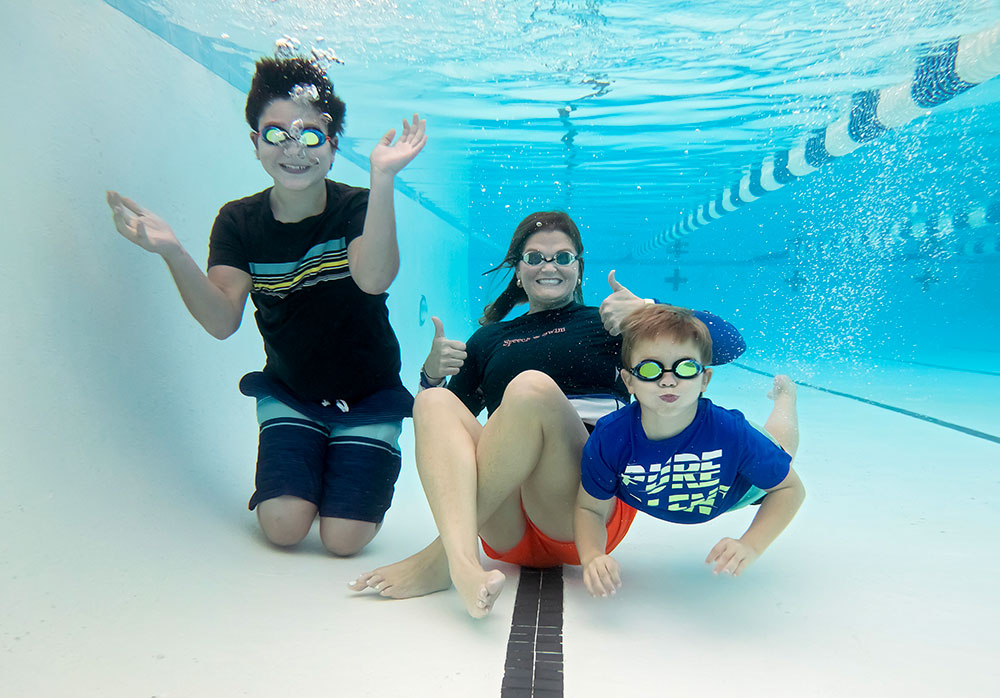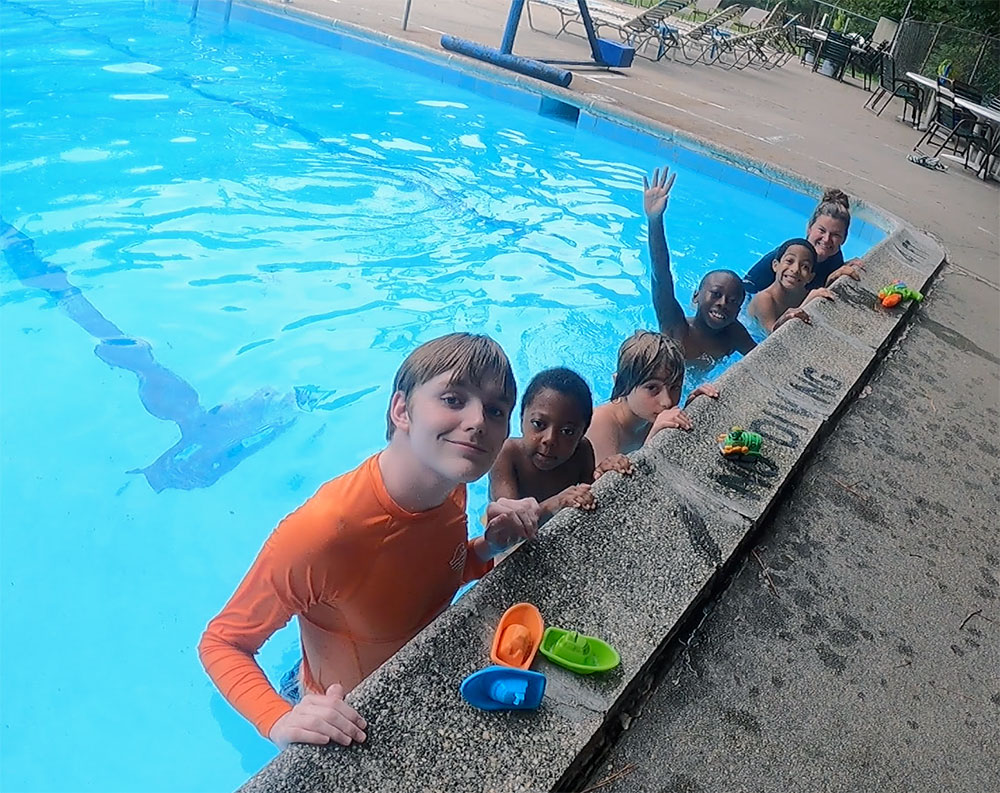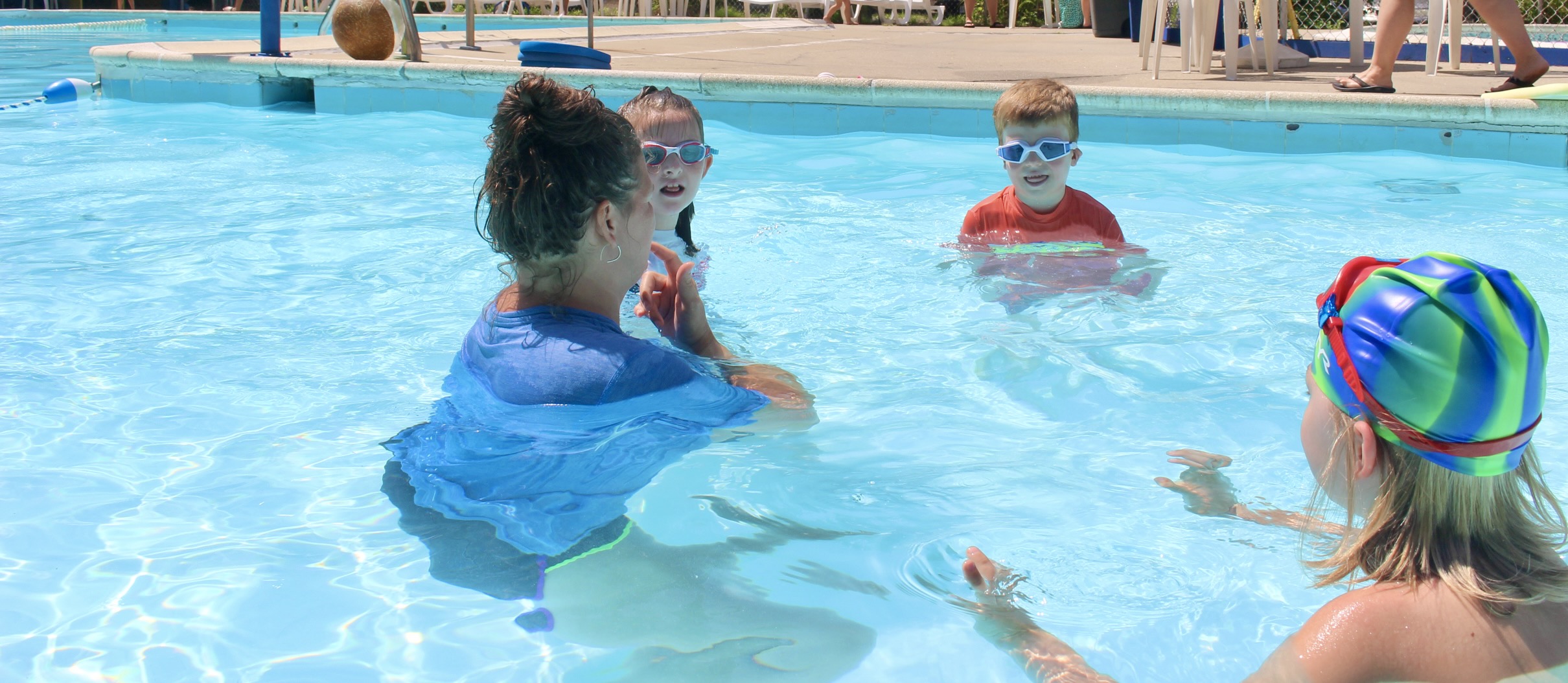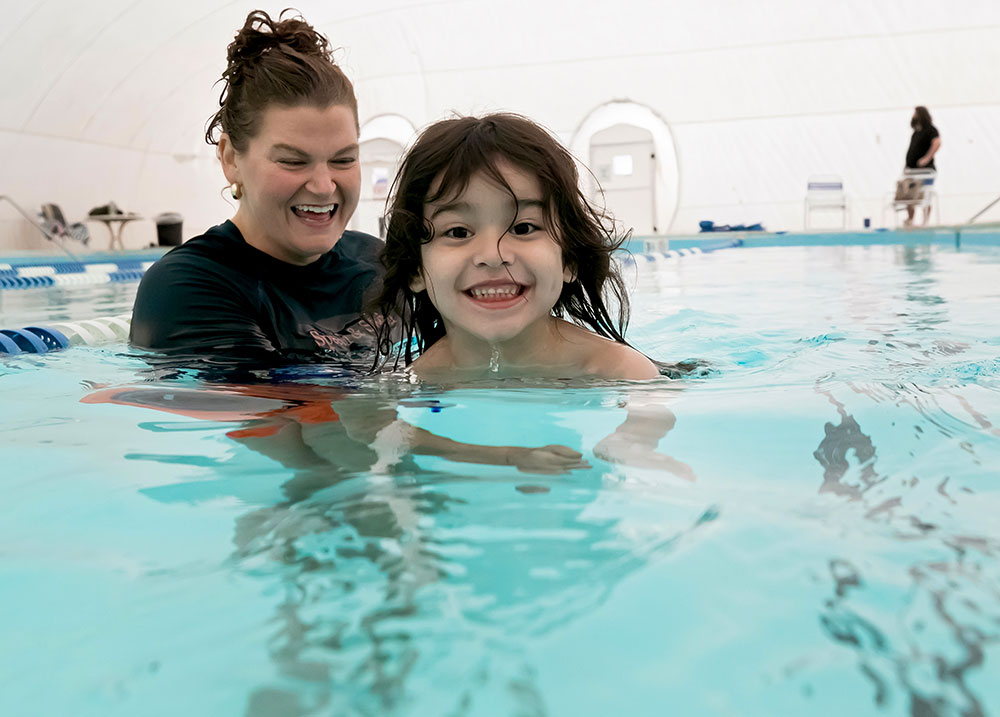Peer Modeling
Group Sessions: Beck uses peer modeling in group sessions. When kids see and hear others following directions and speaking smoothly, they strive to do the same. This carries over to swim instruction, too. When children see their peers putting their faces in the water, swimming without plugging their nose and jumping off from the side of the pool, their confidence around the water increases. Speech sound group classes are open for children with and without documented sound errors. They are categorized for ages 3-4, 5-6, and 7+.
Private Sessions: 1:1 sessions are available for everyone.

Social Swim
Social Swim is a group class for ages 7+ for children with needs in social/pragmatic communication. This aquatic social group incorporates facilitated conversation to help navigate friendships and social relationships. It is an incredibly fun way to practice starting a conversation, asking a peer to play, participating in play (taking turns), sharing the topic of conversation, listening to your friend, etc. Social Swim is taught by two instructors and is one of our most popular classes.



